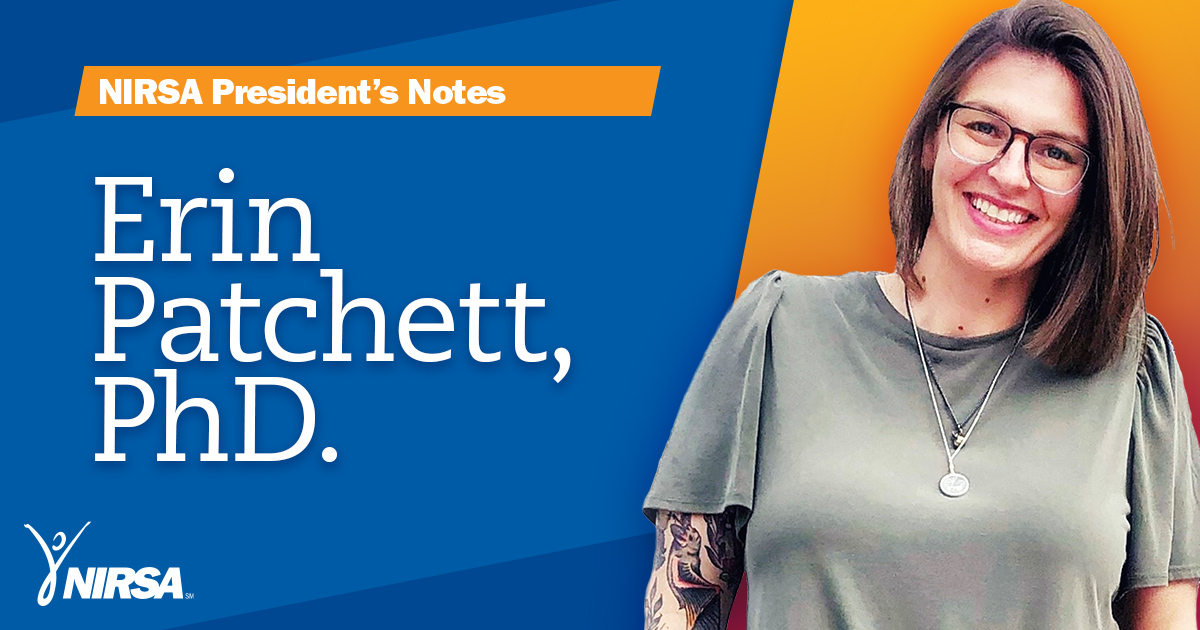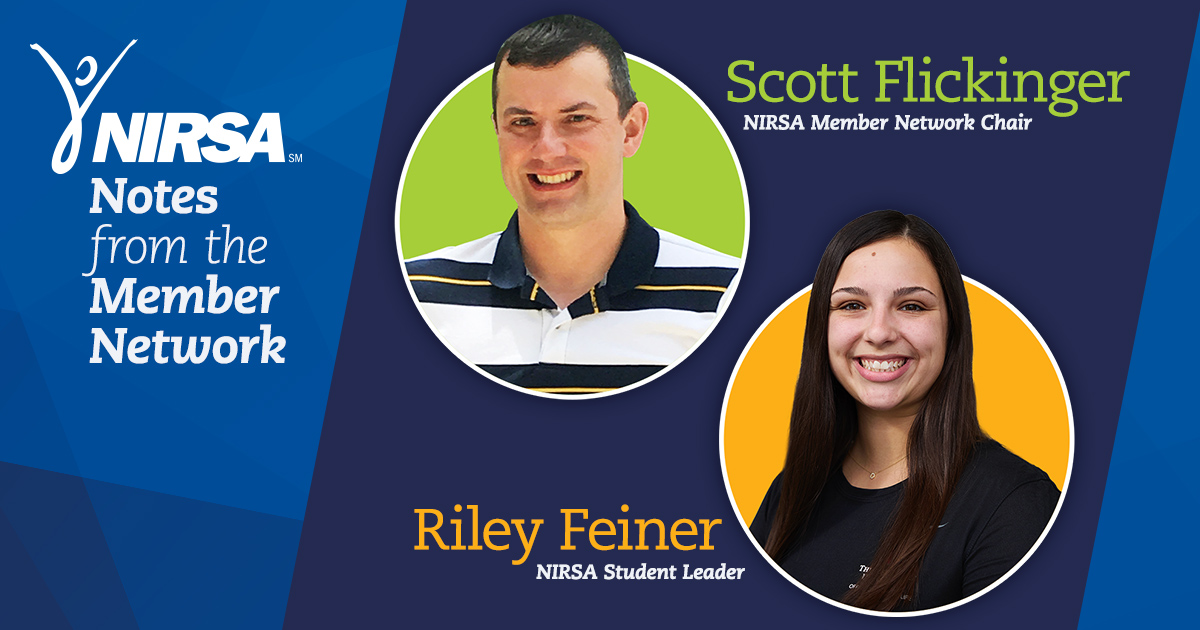My NIRSA friends,
We have made it to the final post in my NIRSA Presidential blog series, as we wind our way through the final month in the NIRSA leadership cycle! For the past year, I have shared some research projects that impact our field, research-related resources we have access to as members, and most recently, advice from researchers in our field regarding how to deepen our engagement with scholarly work. For this final post, I have the honor of sharing some glimpses into how our peers at three schools have used existing research to guide their practice!
Food insecurity in Urbana-Champaign, IL
I connected recently with Alana Harris, PhD, the Associate Director of Assessment and Student Wellness at the University of Illinois at Urbana-Champaign (UIUC). The project we discussed was not only a great illustration of using research to inform a new program, but it also demonstrated how to connect and collaborate with researchers on your campus. Dr. Harris explained that prior to opening their Food Assistance and Wellbeing Program (a student food pantry), the wellness staff examined an article titled The Case for a Six-dimensional Food Security Framework to ensure they took a comprehensive approach to the project.
The staff also conducted some benchmarking around food accessibility related topics for on-campus and community-based resources. Finally, the staff invited a group of researchers from across their institution to get involved in the project: the resulting proposal was approved and resulted in a new food pantry for UIUC students to utilize.
Clapp, J., Moseley, W. G., Burlingame, B., & Termine, P. (2022). The case for a six-dimensional food security framework. Food Policy, 106, 102164.
Student wellness in Fort Collins, CO
While engaging in a certification program this year, Coordinator of Training and Development at Colorado State University, shaquan Harris was exposed to research on forest therapy, a term that refers to the medically proven health effects of exposure to forest environments. Harris is a member of Campus Recreation Student Staff Development Committee at CSU, and when the committee needed an innovative, developmental session to offer to student staff, shaquan utilized the research to lead guided walks around green spaces on campus aimed to create community and enhance the wellness of the attendees.
Kim, J. G., & Shin, W. S. (2021). Forest therapy alone or with a guide: is there a difference between self-guided forest therapy and guided forest therapy programs? International Journal of Environmental Research and Public Health, 18(13), 6957.
Smartphones in Athens, GA
One final example is from J.T. Schexnayder, the Coordinator for Outdoor Recreation at the University of Georgia. He is currently pursuing a master’s degree in forestry and natural resources and used his thesis project to explore whether the usage of smartphones has an impact on participant outcomes during outdoor recreation trips. J.T.’s research project involved treatment groups where some students were encouraged to leave their phones behind, while others were not. Not only did this project satisfy the requirements for his degree, but J.T. is also using the findings to inform how his program sets policies around the usage of phones during outdoor trips.
Andre, E. K., Williams, N., Schwartz, F., & Bullard, C. (2017). Benefits of campus outdoor recreation programs: A review of the literature. Journal of Outdoor Recreation, Education, and Leadership, 9(1).
Thank you
I hope at least one blog post over this past year has inspired you to deepen your engagement with industry research. Even investing time to read one article a semester has the potential to make a huge impact on your work.
Well team, this is the end! It has been an honor to serve as your NIRSA President for the past year and on the Board of Directors for the past three years. Thanks for reading along, and I hope to see you at the NIRSA Conference and Campus Rec Expo later this month. And be sure to follow the @NIRSAPresident handle on Instagram to keep up with the NIRSA Board and your incoming NIRSA President Lashica Thomas, Director of Campus Recreation at Columbus State University.
For one last time – stay nerdy, my friends!
– EP
Erin Patchett, PhD., is currently the Director, Administration & Assessment for Campus Recreation at Colorado State University and the President for the NIRSA Board of Directors; you can email her at erin.patchett@colostate.edu.





